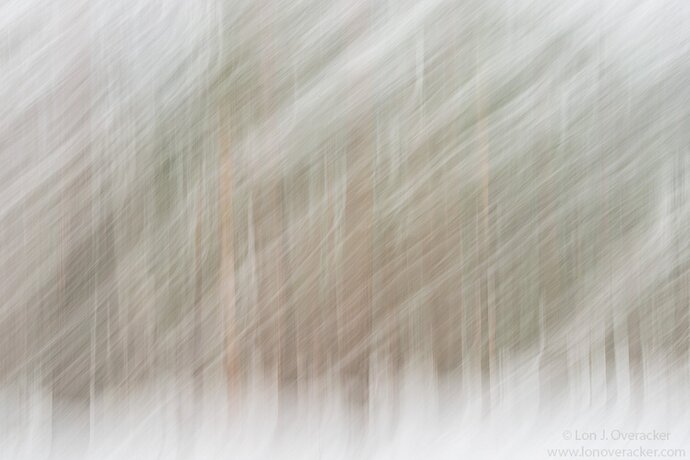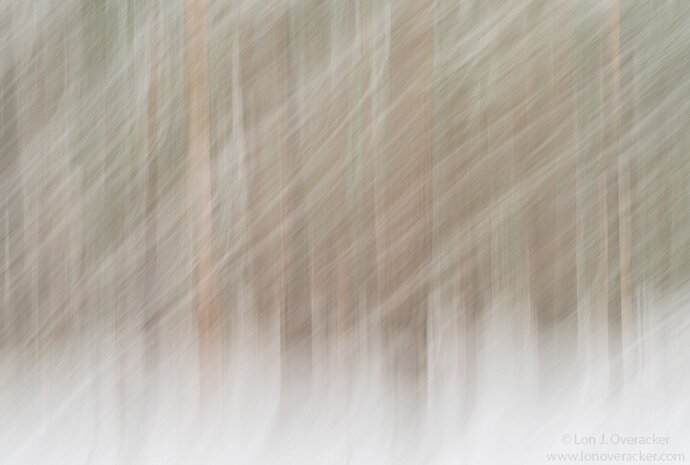You may only download this image to demonstrate post-processing techniques.
Here is another in-camera movement abstract that I thought was worth sharing. I realize it’s not everyone’s cup of tea, but maybe it’s image dependent… Would love your thoughts.
I can’t say that I’ve ever been able to say this, but this first posting is literally straight out of the camera. The ONLY thing I did was open in to PS from ACR, clone a handful of dust bunnies and then crop for the web using TK’s action. No ACR presets, nothing. Now, of course - there are some presets within the camera, but basically there is no post processing, not even a crop.
While this is still abstract in nature, I think the trees and forest are recognizable enough. What was amazing is that it was NOT snowing at the time. All the streaks of “snow” are from clumps of snow on the tree branches (mostly cedar I think) and the diagonal motion of the camera. There were actually two motions here. I started with the vertical motion and then “tailed off” diagonally all during a .3s exposure. Needless to say, the camera motion was pretty quick.
I’m posting 2 other variations for your opinion. Same frame only with a little more processing to draw out some color. Then a cropped version of that.
As always, your comments, critiques and feedback are welcome!!!
What technical feedback would you like if any?
Processing, colors, luminosity, etc.
What artistic feedback would you like if any?
Any thoughts, good or bad.
Pertinent technical details or techniques:
(If this is a composite, etc. please be honest with your techniques to help others learn)
Nikon D800E, 28-300mm @62mm, f/18 .3s iso 50, single frame, handheld with motion




 Of all the renditions, I prefer
Of all the renditions, I prefer 
